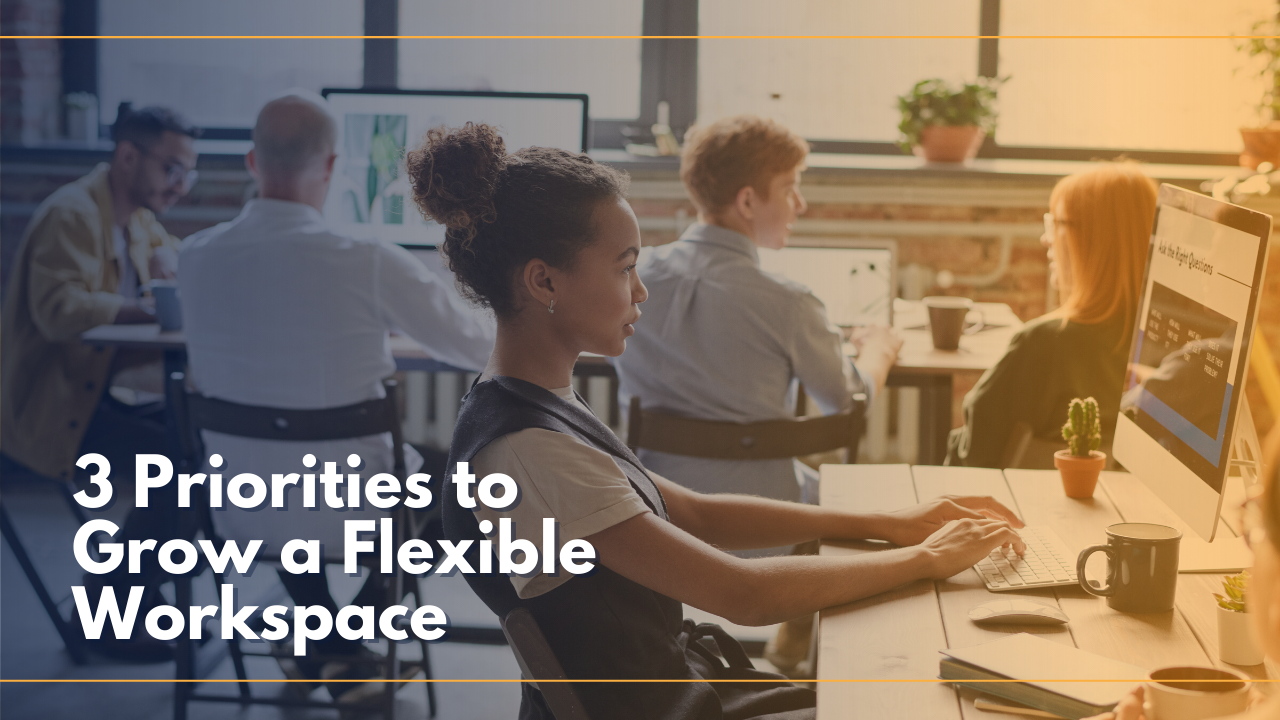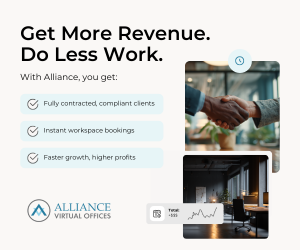- essensys’ latest webinar brought together four industry experts to explain the key factors to focus on when building and growing a flexible workspace business.
- Panelists included Christine Andrews, Giovanni Palavinci, William Edmundson, and Liz Elam.
- During the webinar, the panellists identified 3 priorities for growth: workspace culture, landlord relationships, and overcoming negative publicity.
It’s a new year and a new decade, which for some, signals an opportunity for change. If you’re going for growth in 2020 but you’re not sure where to start, why not crowdsource expert advice from your industry peers?
Better still, pop your headphones on and let the experts come straight to you.
In their latest webinar, essensys brought together four industry experts to explain the key factors to focus on when building and growing a flexible workspace business.
Panellists included:
- Christine Andrews – DECO Group
- Giovanni Palavinci – Fronteras Commercial Real Estate
- William Edmundson – Office Evolution
- Liz Elam – GCUC
During the webinar, the panellists were invited to discuss how operators can accelerate growth in a competitive market. We know that the coworking and flexible workspace market is still growing; Instant Offices found that supply in the US has increased by 10% year-on-year, with flexible locations growing 50% in size in the last 12 months.
Further growth is expected as the market continues to diversify. So how can operators differentiate in competitive markets? What are the top priorities?
3 Priorities to Grow a Flexible Workspace
Much of the discussion was dedicated to three key priorities:
- Workspace culture
- Landlord relationships
- Overcoming negative publicity (a.k.a. the WeWork effect)
Let’s dive in.
1. Culture.
“Your culture shouldn’t be phrases on your website,” said William Edmundson from Office Evolution. “We chose a Hawaiian word, Ohana, which means family or tribe. To us it means working together for a common cause, and we share this with our team and members.”
Edmundson urged operators to build an authentic culture that filters through to their members and helps create a positive, harmonious workplace environment.
Adding to this, Giovanni Palavinci from Fronteras Commercial Real Estate noted that operators must be careful not to lose their ‘why’. Every time you go after new clients, first be clear why you’re targeting them — and only target the ones that compliment your space and your community.
Liz Elam from GCUC concurred: “Know who you are and embrace that.”
She encouraged operators to aim for organic sales; the type of members that come to you because they’ve heard you’re providing a great experience.
On the flipside, she warned against letting a positive culture slide, as this can be just as damaging as having no culture at all.
“There’s no worse greeting than a tired, overworked community manager!”
2. Landlord Relationships.
A good relationship with landlords is vital for future growth.
In recent months, there has been some negative publicity around the flexible space industry following WeWork’s high-profile fall from grace. Therefore a positive and transparent relationship is even more important. But how do you build one?
For Christine Andrews from DECO Group, it starts before you even sign a deal.
“Understand your own tolerance for risk and have those conversations with yourself before negotiations even start,” she said.
The danger is that operators see a space, fall in love with it, and ignore any red flags in their desire to secure the building. It becomes emotional — not logical.
“You need to understand when the deal no longer works for you. Have a line you don’t cross and be prepared to walk away. It’s a huge discipline but remember, there will always be another deal.”
Elam added, “You must make sure the numbers work first, before falling in love with the building.”
For Edmundson, who works with dozens of franchisees and commercial landlords, the key lies in cooperation and being able to work closely together.
“We’re set to open 20-25 more spaces this coming year. It takes the whole ‘Ohana’ to make it work! It doesn’t matter where you are; what matters is finding a cooperative landlord and working out your own successful formula. Stick with it.”
3. Overcoming Negative Publicity (a.k.a. The WeWork Hangover).
What’s the biggest challenge for operators right now?
According to the panel, it’s the WeWork effect.
According to Palavinci, he is frequently asked about WeWork and why they imploded.
“Tell the story of WeWork from your own perspective, but be able to say why you’re different,” he advised.
Edmundson added, “The WeWork hangover is going to be around for a while. Work to differentiate your brand, know and live your culture, and practice it every day.
“Keep true to what you’re doing — sales isn’t just about getting new members, it’s about retaining the ones you already have.”
Andrews concurred: “When DeLorean failed, people didn’t go back to horses and buggies. It’s important for us to remember that we are a baby industry! There is still so much opportunity for growth.
“Sure, one big player has failed. So what? Demand is still massive. For 2020, focus on demand for our industry and the needs of your members. The same holds true for new operators. Focus on what your members need and want, and work to deliver it.
“We have not even come close to maturing our industry. Keep your head down, do the work, keep going. You will succeed.”
Bonus Tips
Below are some additional growth tips that were discussed. Be sure to listen to the webinar recording for the full impact.
- Tech: DIY or Off-The-Shelf? For new operators who don’t have a large budget, should they invest in technology to help run the space? Or go for a DIY approach? Before deciding on your tech investment, the first step is to clearly identify your business objectives and growth plans. For instance, if your plan is to scale quickly and become a premium workspace provider, then a purpose-built and reliable tech platform can help accelerate growth and deliver on the requirements of your clients. But even for smaller spaces, the manual DIY approach is often time-intensive and laborious. “Struggling with spreadsheets is not an effective use of anyone’s time,” said Andrews. “Make a decision, pick a tech partner, move forwards.”
- Get Your Act Together: According to Elam, following WeWork’s demise, there is now a huge influx of corporations looking for flexible space — but not enough coworking spaces that are ready to expand to meet that need. “This is a good problem to have!” she said. “Who is ready to scale? It’s a challenge — get your act together! If you want to compete on a national level, start expanding now.”
- Competitive Markets: According to Edmundson, proximity to other spaces shouldn’t be seen as a problem. “They educate people about what we do. It’s a head start. Use that to your advantage.” Elam added: “When coworking spaces are close together physically, it’s fine — it lets people try different spaces and find the flavor that suits them, like ice cream.”
- Marketing Must-Dos: Always ask people who come for a tour, ‘How did you find us?’ This will help you to focus more on the marketing efforts that are working, and cut back on the ones that aren’t. Plus, pay attention to your website. “If you have to hunt for the location and phone number, you’ve already failed.” said Elam. “A member’s first experience with your brand is your website. It’s your calling card. You must provide a beautiful experience — on photos, leave one chair empty so they can see how they fit into your space.”


 Dr. Gleb Tsipursky – The Office Whisperer
Dr. Gleb Tsipursky – The Office Whisperer Nirit Cohen – WorkFutures
Nirit Cohen – WorkFutures Angela Howard – Culture Expert
Angela Howard – Culture Expert Drew Jones – Design & Innovation
Drew Jones – Design & Innovation Jonathan Price – CRE & Flex Expert
Jonathan Price – CRE & Flex Expert














